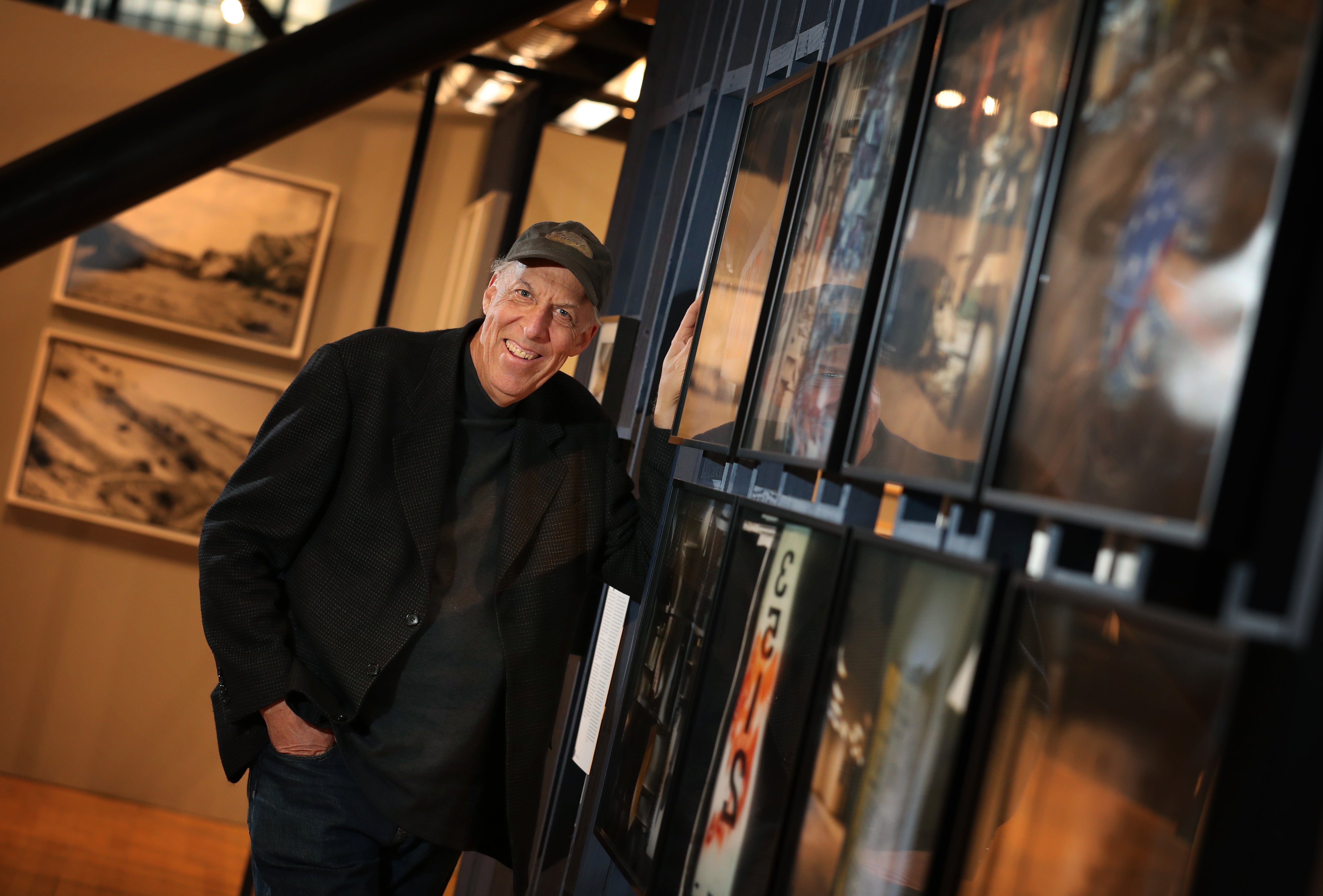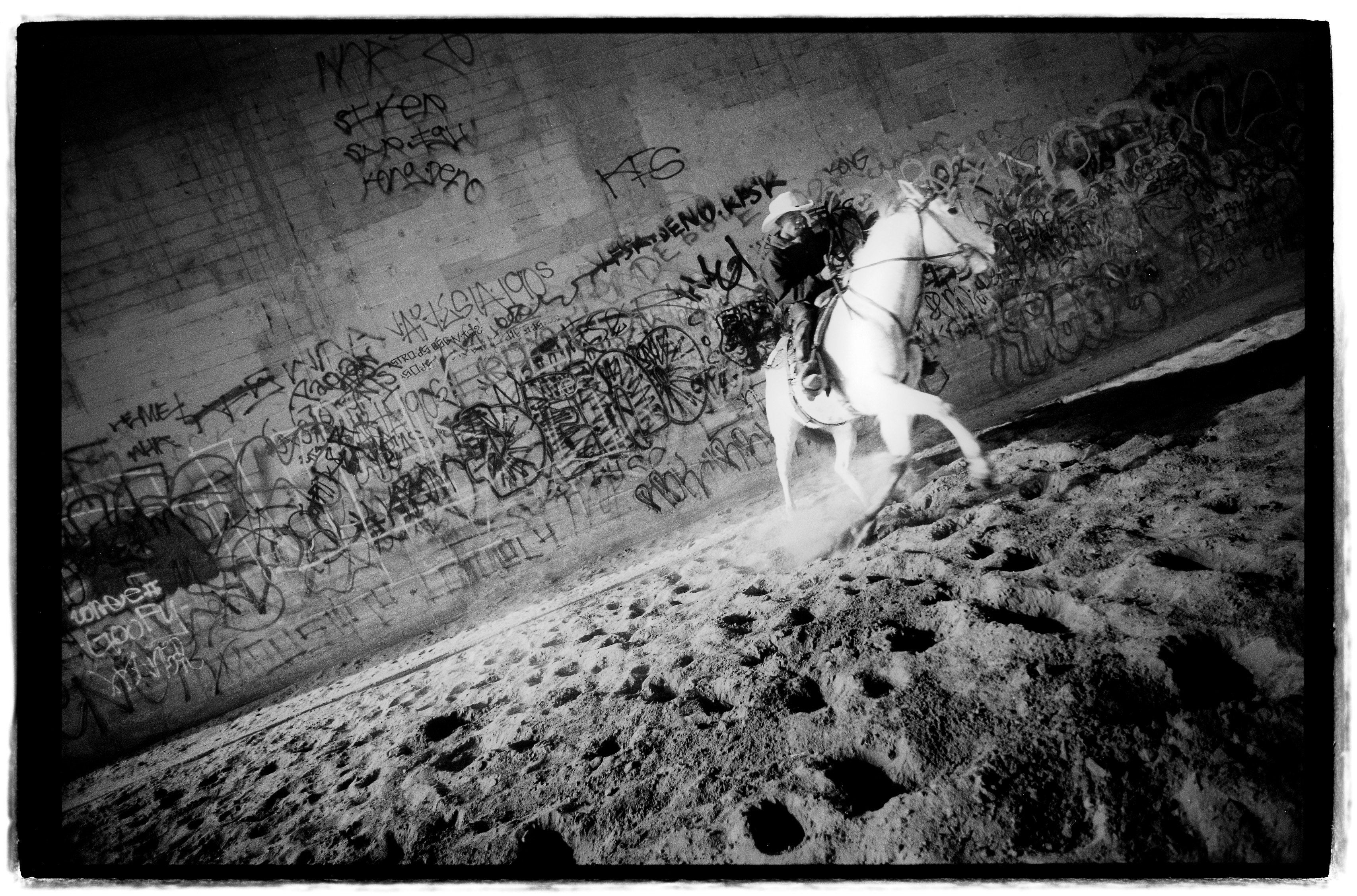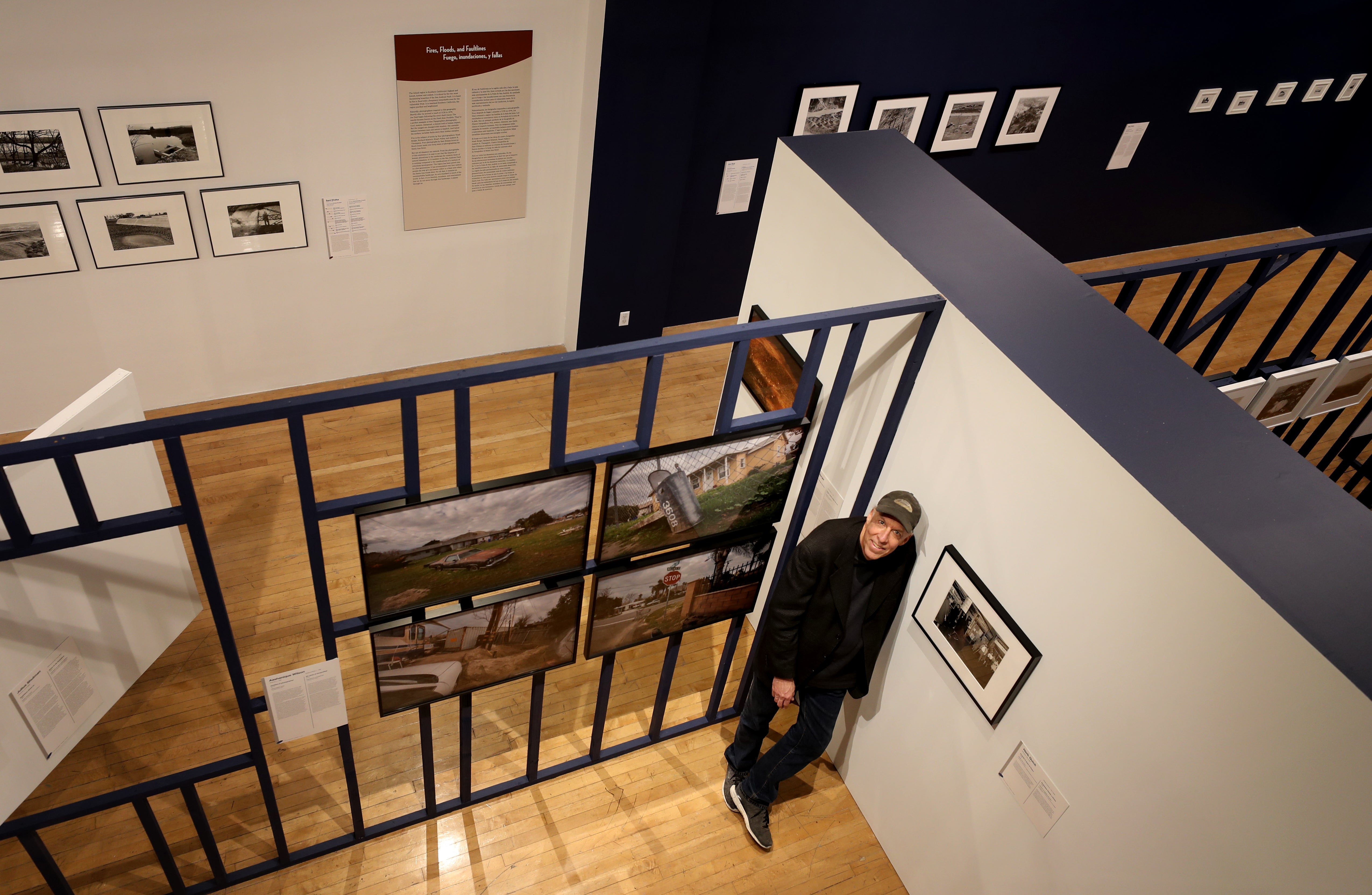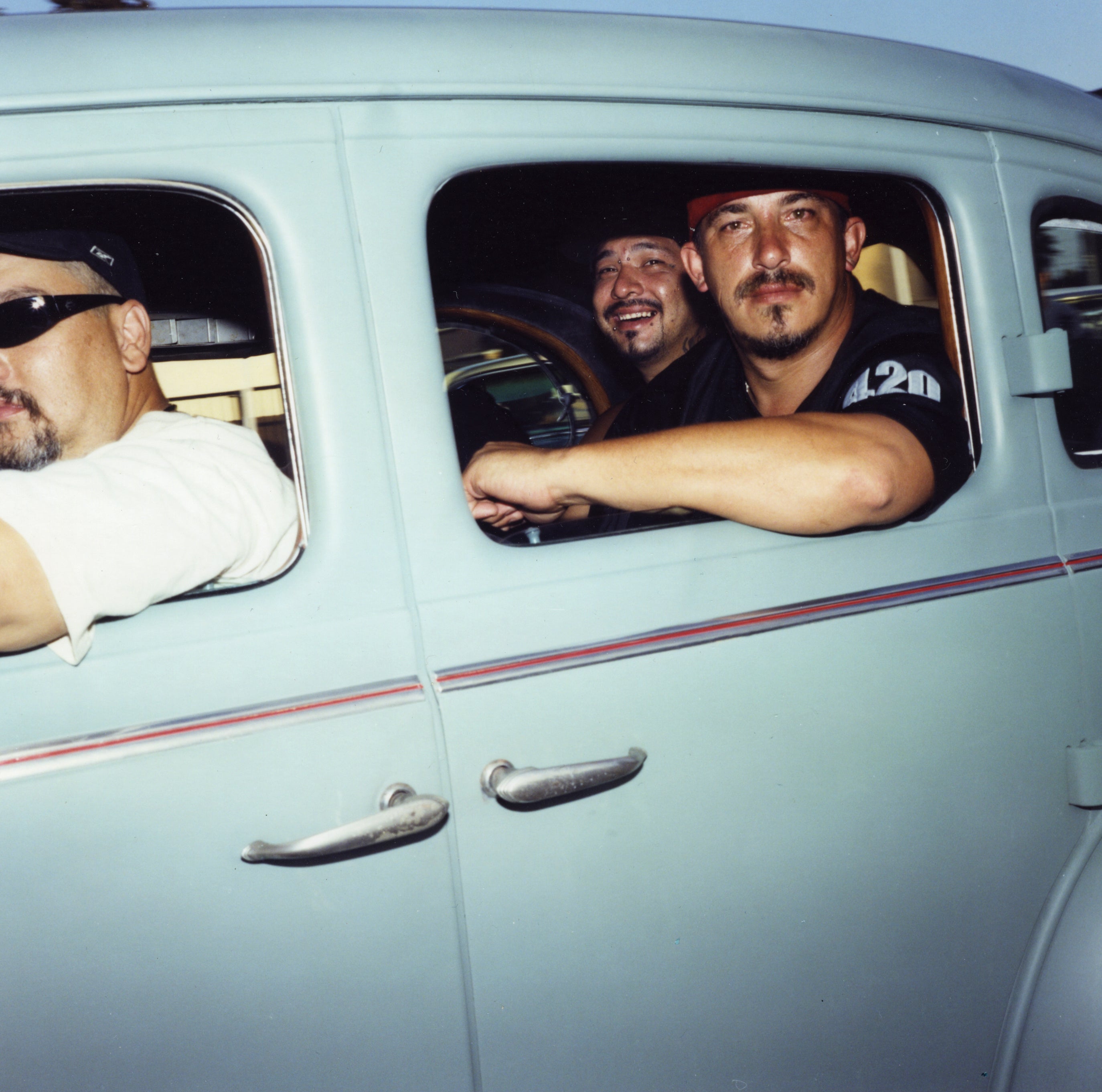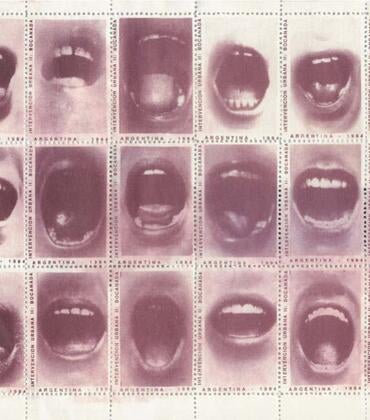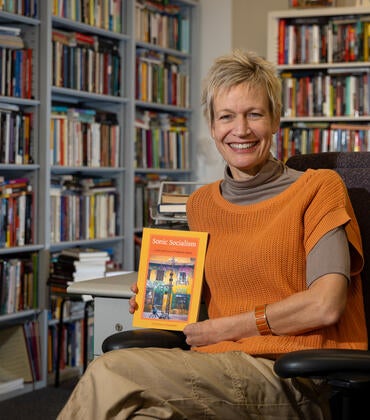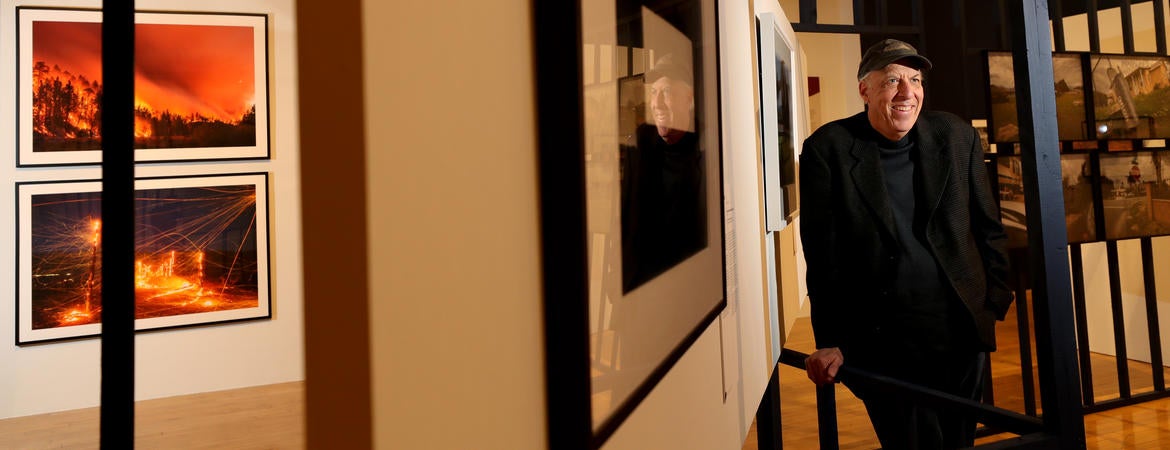
Douglas McCulloh is not a man ruled by fate, but rather, chance. In fact, McCulloh, who joined UCR ARTS as the new senior curator for the California Museum of Photography, or CMP, in July has made chance his primary modus operandi.
He traces his preoccupation with chance back to his parents — a geologist and an Austrian refugee — inheriting notions of deep time and geologic inconsequence from his father and proof that life can change in an instant from his mother, who was forced to flee Europe during her childhood.
“I was raised with the idea that everything’s contingent, everything’s chance-y, and if the world operates through chance, then why not use chance as a way to engage with the world — and that’s what art can do.” he said.
Throughout his prolific career as a photographer, McCulloh, 59, has relied on chance to steer his work, devising system-driven projects with clearly defined sets of rules for how his art is produced and chance operations that remove individual will, as drivers of creation. Referencing artist and composer John Cage and the Dadaists as sources of inspiration, he paradoxically uses systematic processes for employing chance in art.
“A system of chance seems really rigid, but the goal in that system is actually freedom — freedom from your own preconceptions, freedom from you controlling things. You place yourself at the mercy of chance, and you commit to it. So, the system is structured, but the point of the system is freedom.” McCulloh said.
In “Chance Encounters” for example, McCulloh gridded a map of urban Los Angeles County into 5,151 quarter-mile squares and used chance operations — in this case, randomly selecting the available map coordinates on chips first shaken in a container — to select a new quarter-mile section each day, then spent the entire day making photographs and collecting stories within that demarcated perimeter. The project culminated in 22,000 miles driven, 23,000 photos shot over seven years, and a traveling exhibition first curated by the CMP in 2002. Much of his work is characterized by a systematic-yet-rapid-fire, high-volume mode of operation akin to the many street photographers he admires.
“I love a whole constellation of photographers, most of whom are using this amazing machine that can grab these little moments on the fly — these little jaws that’ll bite a piece of reality really quickly and almost reflexively,” he said. “I try to use the camera in a way that seems like its automatic way of functioning, which seems like the natural mode of photography to me.”
In a current chance-driven project, McCulloh has marked a giant “X” across the United States — corner to corner. Using a portable airplane navigation system able to follow the line with 3-foot accuracy, he’s traveling cross-country photographing only what falls on the line. He began this ongoing project in 2012.
“I’ve done about three quarters of it now,” he said. “Thank God I’m done with Kansas. There was a lot of Kansas.”
The result of this systematic, high-volume method of artmaking is a body of long-range, complex, idiosyncratic work — a monolith of dedication and patience. Much like his methodical chance operations, such meticulous practice seems somewhat of a paradox when compared to McCulloh himself, who towers in height at just over 6-foot-1 as much as in affability. Wearing jeans, a suit coat, and a ball cap — a true mix of business and casual — McCulloh exudes an easygoing air, quick with a joke, but beneath his laid-back attitude lies a rigorous dedication to his art. He credits that inherited geologist mindset for his dogged ability to embark on years — sometimes decades — long endeavors.
“The world doesn’t happen abruptly,” he said. “Mountains erode completely away, but they don’t do it in a month. They do it in perhaps 16 million years, and they do it one grain at a time. So, my projects tend to be like incremental gathering; it’s grains of sand eroding a mountain away. The mountain will erode, it’s just a matter of time.”
“I have to say,” he added, “I always have multiple projects going on, and that’s much more fun. I’m sort of like Sisyphus running back and forth and pushing 12 rocks uphill.”
Unsurprisingly, his first curatorial undertaking as senior curator for the CMP is an exhibition that had been brewing in his mind for the last 10 years. What began as a slow-growing collection of images saved over the lives of three laptops turned into 54 photographers, 194 photographs, a 274-page catalogue, a large-scale exhibition shared between two museums, and the first-ever photographic survey of the Inland Empire. “In the Sunshine of Neglect,” on view at the CMP and Riverside Art Museum until April 28, is a comprehensive exploration of a region McCulloh believes has been long overlooked.
“It’s where people drive through on their way to Palm Springs, where LA sends its ozone to bake in the summer sun,” he said. “It’s kind of this zone of neglect, and because it’s periphery — a margin — it’s perfect for artists to come and operate. There’s freedom on the margins, and this area has been used by artists and photographers for decades as a laboratory for experimentation.”
Divided into seven sections, the exhibition includes the work of both renowned photographers, including Robert Adams, Ansel Adams, Judy Chicago, Judy Fiskin, and McCulloh himself, and many emerging talents. The result is a sweeping index of the geographically, ethnically, and socioeconomically varied Inland region from 1950 to the present.
“There are real benefits to being overlooked, because then I get to do a cool show on important work that’s never been gathered together before,” McCulloh said. “People said to me at the opening, it’s sort of like you’ve uncovered a lost history of photography here, but to me it’s just obvious. There’s a great artist, Robert Irwin, who said, ‘sometimes I feel like a man standing by a river selling water.’ That’s how I feel with this show. I’m a man standing by a river selling water.”
Accompanying the images in the exhibition is a wealth of text written by McCulloh, a practice he has long employed with his own work. He often sees text as being as necessary as the images themselves, providing context and story, and much of McCulloh’s work has been classified as social documentary photography. With “The Legacy Project” for instance, a collaborative and ongoing endeavor surrounding the defunct El Toro Marine Corps Air Station in Orange County, McCulloh uses text along with image to delve into its complicated history.
“I make these system-driven efforts, but in the end, they always have an anthropological or sociological overlay,” he said. “There’s a map, there’s a location, there’s a time, there’s text, and then there’s image. So, they’re layers of information, and that takes on a social dimension.”
Now as a senior curator for the CMP, McCulloh is stepping into yet another complex, multilayered endeavor. Over the years, he has participated in numerous exhibitions and served as a guest curator for the museum, having spearheaded the acclaimed traveling exhibition “Sight Unseen,” featuring blind photographers in 2009. But this will be his first stint in an ongoing curatorial role.
“There’s kind of a natural transition from being embedded in the community and having your own practice, to being an admirer, to a curatorial role,” he said. “If I’m blown away by what an artist is doing, I will try and be a champion for giving them a platform to stand on. If you’re engaged with things, open to things, cast a wide net, and eventually get really rigorous about it, that’s curation; it’s following your own curiosity.”
Along with his own long-standing relationship with the museum, McCulloh was drawn to joining the CMP in a more permanent role because of its position as an important cultural institution — its collection of 750,000 objects forming the largest, most comprehensive holding of any photographic collection in the Western United States — and its history of important photography exhibitions since its founding in 1973.
“It’s one of the gems of the UC system and southern California, but there’s also this larger goal,” he said. “The curatorial vision is really broad, but it’s to do things that university art museums should do, which is be a little bit adventurous and have some academic rigor. Be accessible and important, but always have a layer of significance within the larger culture, whether that’s the University of California, California in general, the West Coast, or the world.”
“University art galleries traditionally have been at the vanguard of art in some ways,” he added, “so that’s the attempt here, which is totally fun. It’s a total insane privilege. I don’t know, think big. What the heck. What could go wrong?”
***
On view at the California Museum of Photography
In the Sunshine of Neglect
Defining Photographs And Radical Experiments in Inland Southern California, 1950 To The Present
Jan. 19 - April 28, 2019, Curator: Douglas McCulloh
Mirror Mirror
Feb. 9 - May 12, 2019, Curator: Douglas McCulloh
For more information, please visit UCR ARTS.
